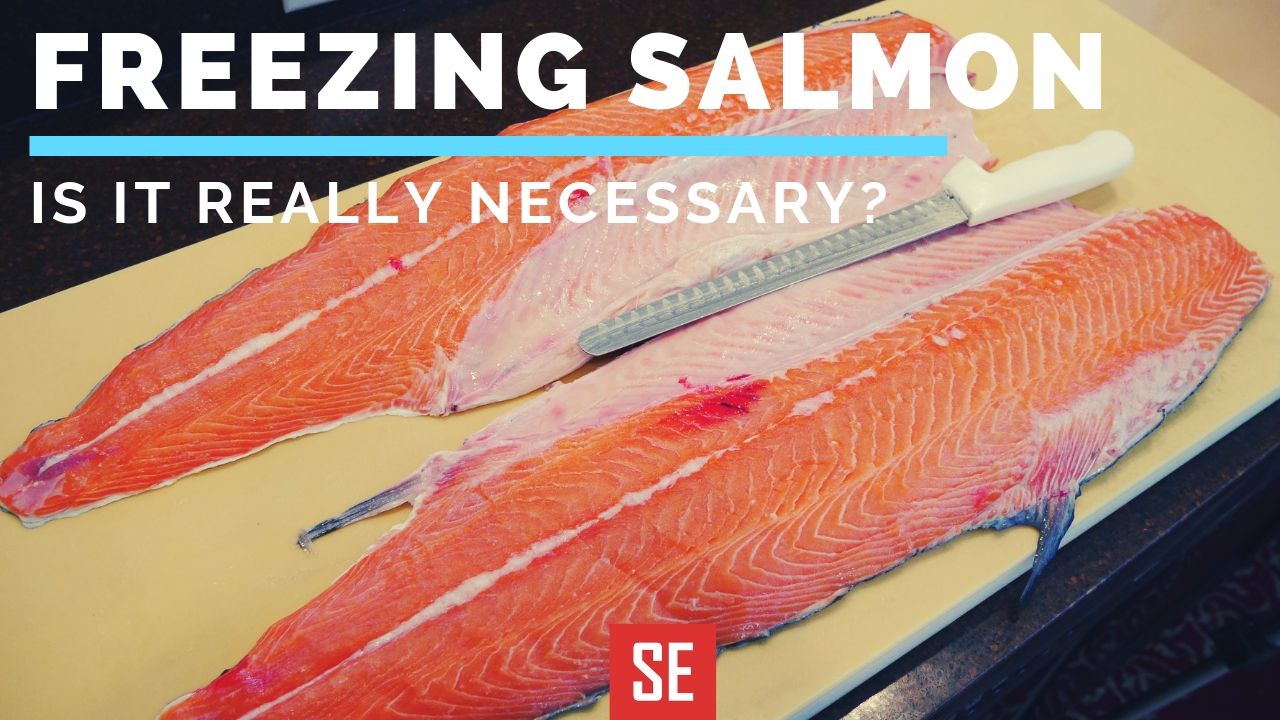
If you want to freeze raw salmon rinse it pat it dry and wrap it tightly in plastic wrap. The answer fortunately is yes you can absolutely freeze cooked salmon.

All three work well to prevent air contact while the fish is frozen.
Best way to freeze salmon. Heres a great way to freeze wild caught sockeye or coho salmon. Purchase it when its on sale then freeze it so you can enjoy it when the price goes up. How To Freeze Cooked Salmon Step 1.
Cool the salmon to room temperature after cooking. To speed up the cooling process place it in the. Use a sharp knife to cut the salmon into the desired portion sizes.
Wrap each individual portion in cling film or foil. If you have leftover smoked salmon freezing helps to preserve it. Cut smoked salmon into slices or pieces depending on your preferences and how you plan to use it.
Wrap each portion size in aluminum foil or plastic wrap to protect from freezer burn. Place the wrapped salmon in a freezer bag. The answer fortunately is yes you can absolutely freeze cooked salmon.
However the texture and flavor of the fish will suffer from its time in the freezer. Cooked salmon will last approximately four to six months in the freezer as long as you seal it tightly in freezer-safe bags or airtight plastic containers. Salmon can be kept for up to two days in the refrigerator.
Remove the salmon from its wrappings rinse thoroughly with cold water and pat dry with a paper towel. Wrap the fish tightly in a layer of plastic wrap followed by another layer of aluminum foil. You can also add.
How to Freeze Fresh Fish in 6 Easy Steps Place on ice immediately. Keep the fish submerged in ice until ready to fillet. Process and sort into meal-size portions.
Clean your catch as quickly as possible. Cut and sort fillets based on how. Rinse with cold water.
This will help remove any leftover. Freezing fish in water is a great way to keep it fresh. However the flesh can absorb water during the process turning it mushy.
Make sure your freezer is set to its coldest level to freeze fish. Cold Roast Salmon with Smashed Green Bean Salad. If youre still determined to reheat that piece of salmon thats been lurking in your freezer for a month and eat it as is the best way to go.
We like this water-submersion method the best for its efficiency get started on the roasted vegetables while you wait and results no dryness to speak of. Fill a large pot with cold water. Place the fish in a leak-proof bag and submerge it in the pot weighing it down if needed.
The 3 Best Ways to Freeze Fish In my opinion the three best ways to freeze fish are vacuum sealing freezer paper combined with freezer plastic or a Ziploc bag and ice glazing. All three work well to prevent air contact while the fish is frozen. Get out multiple freezer bags to divide up the salmon then place the marinade ingredients inside and seal.
These can be placed in the fridge or freezer depending on when youll be using them. I like to marinate my salmon overnight to get the most flavor. If you want to freeze raw salmon rinse it pat it dry and wrap it tightly in plastic wrap.
Place it in an airtight container or zip-top bag and freeze it. Make sure to label the salmon with the date and use it within three months. To freeze cooked salmon place it in an airtight container label it with the date and use it within six months.
Flash freezing is another way of securing the longevity of your smoked salmon in the freezer. Flash Freeze Place your portions of smoked salmon in a single layer on a baking sheet. It is best to lay it on a layer of cling film so that it wont stick to the baking sheet once frozen.
You can freeze salmon for up to 6 months. However the quality of the meat starts degrading after 3 months. First rinse the raw salmon pat it dry fold it in an air-tight container and freeze it.
Write down the date of freezing and consume it before 6 months. The best methods for freezing fish are in order. 1 vacuum sealed 2 wrapped in plastic wrap double-wrapped is even better 3 freezer paper 4 any method packaged in water water affects texture and.
Cover the salmon loosely with aluminum foil to prevent the edges from drying out. Place the cooked salmon on a baking sheet. Put in the oven for about 15 minutes until the salmon reaches an internal temperature of 125 to 130 degrees Fahrenheit.